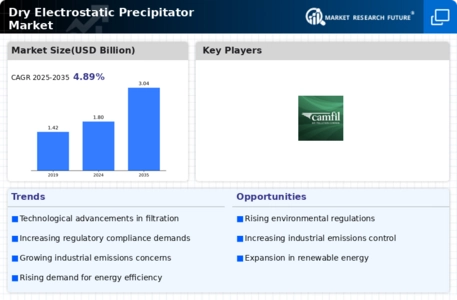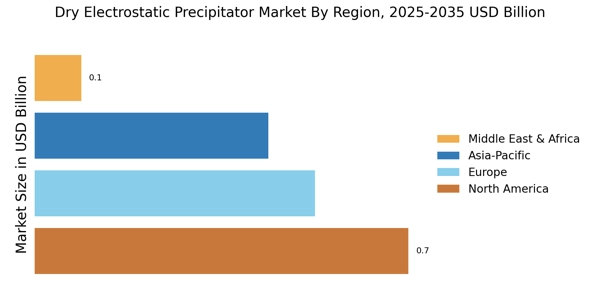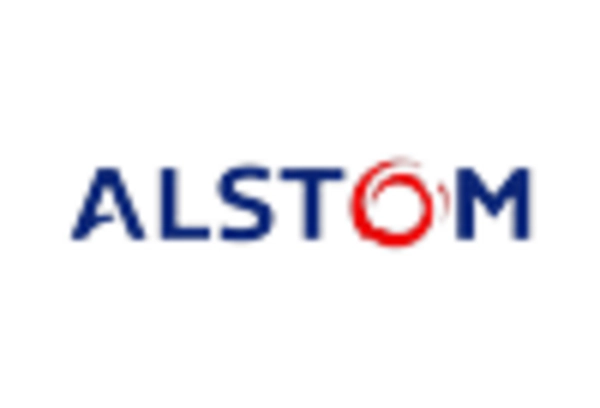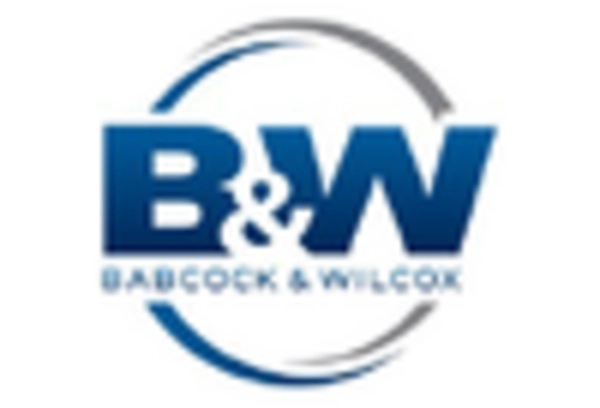Technological Innovations
The Dry Electrostatic Precipitator Market is experiencing a surge in technological innovations that enhance efficiency and performance. Advanced designs, such as multi-stage precipitators, are being developed to improve particulate matter collection rates. These innovations are crucial as industries seek to comply with stringent emission regulations. The integration of smart technologies, including IoT and AI, allows for real-time monitoring and predictive maintenance, which can reduce operational costs. As a result, the market is projected to grow at a compound annual growth rate of approximately 5.2% over the next five years, driven by these advancements.
Focus on Health and Safety
The Dry Electrostatic Precipitator Market is increasingly driven by the heightened focus on health and safety standards. Industries are recognizing the importance of maintaining air quality to protect the health of workers and surrounding communities. This awareness is prompting companies to invest in advanced air pollution control technologies, including dry electrostatic precipitators, to mitigate harmful emissions. The market is expected to grow as organizations prioritize health and safety compliance, with an anticipated annual growth rate of around 5% as they seek to enhance their corporate responsibility and public image.
Rising Demand for Clean Energy
The Dry Electrostatic Precipitator Market is benefiting from the growing demand for clean energy solutions. As countries transition towards renewable energy sources, the need for efficient air pollution control systems becomes paramount. Industries involved in biomass, solar, and wind energy production are increasingly adopting dry electrostatic precipitators to minimize emissions. This trend is further supported by government incentives and funding for clean energy projects, which encourage the adoption of advanced pollution control technologies. The market is projected to witness a growth trajectory of approximately 6% as the clean energy sector expands.
Increasing Environmental Regulations
The Dry Electrostatic Precipitator Market is significantly influenced by the rise in environmental regulations aimed at reducing air pollution. Governments are implementing stricter emission standards for industries, particularly in sectors such as power generation and manufacturing. This regulatory landscape compels companies to invest in advanced air pollution control technologies, including dry electrostatic precipitators, to meet compliance requirements. The market is expected to expand as industries prioritize investments in cleaner technologies to avoid penalties and enhance their sustainability profiles. The increasing focus on environmental protection is likely to drive a market growth rate of around 4.8% annually.
Industrial Growth in Emerging Economies
The Dry Electrostatic Precipitator Market is poised for growth due to the rapid industrialization in emerging economies. Countries in Asia and Africa are witnessing a surge in manufacturing activities, leading to increased emissions. As these nations strive to balance industrial growth with environmental sustainability, the demand for effective air pollution control technologies, such as dry electrostatic precipitators, is rising. The market is likely to see a compound annual growth rate of about 5.5% as industries in these regions invest in cleaner technologies to comply with international standards and improve air quality.


















Leave a Comment